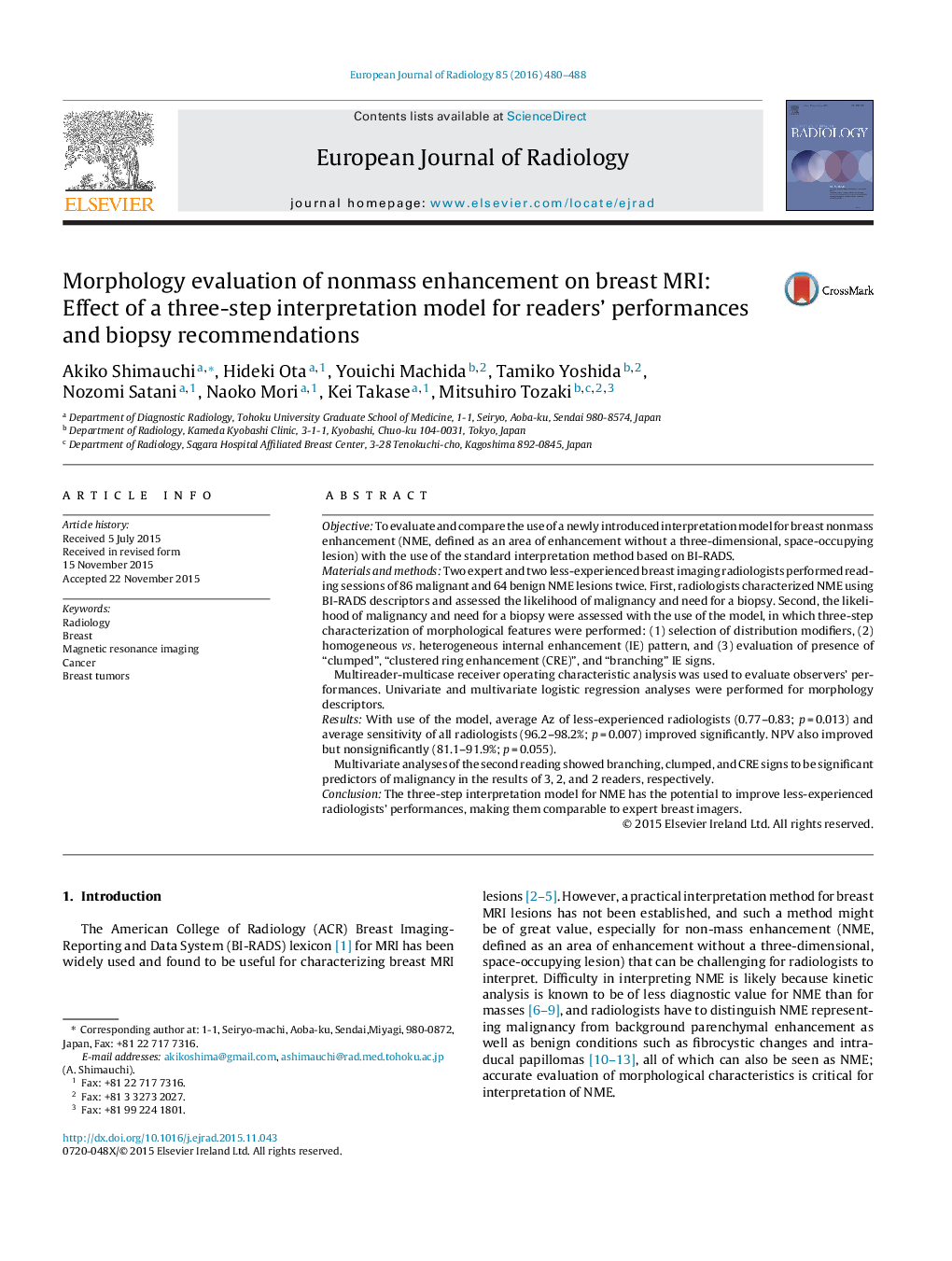| Article ID | Journal | Published Year | Pages | File Type |
|---|---|---|---|---|
| 4225075 | European Journal of Radiology | 2016 | 9 Pages |
•Nonmass lesion 3-step interpretation model improves less-experienced readers’ performance.•Nonmass lesion 3-step interpretation model improves readers’ mean sensitivity.•Branching, clumped, clustered ring enhancement signs are predictors of malignancy.
ObjectiveTo evaluate and compare the use of a newly introduced interpretation model for breast nonmass enhancement (NME, defined as an area of enhancement without a three-dimensional, space-occupying lesion) with the use of the standard interpretation method based on BI-RADS.Materials and methodsTwo expert and two less-experienced breast imaging radiologists performed reading sessions of 86 malignant and 64 benign NME lesions twice. First, radiologists characterized NME using BI-RADS descriptors and assessed the likelihood of malignancy and need for a biopsy. Second, the likelihood of malignancy and need for a biopsy were assessed with the use of the model, in which three-step characterization of morphological features were performed: (1) selection of distribution modifiers, (2) homogeneous vs. heterogeneous internal enhancement (IE) pattern, and (3) evaluation of presence of “clumped”, “clustered ring enhancement (CRE)”, and “branching” IE signs.Multireader-multicase receiver operating characteristic analysis was used to evaluate observers’ performances. Univariate and multivariate logistic regression analyses were performed for morphology descriptors.ResultsWith use of the model, average Az of less-experienced radiologists (0.77–0.83; p = 0.013) and average sensitivity of all radiologists (96.2–98.2%; p = 0.007) improved significantly. NPV also improved but nonsignificantly (81.1–91.9%; p = 0.055).Multivariate analyses of the second reading showed branching, clumped, and CRE signs to be significant predictors of malignancy in the results of 3, 2, and 2 readers, respectively.ConclusionThe three-step interpretation model for NME has the potential to improve less-experienced radiologists’ performances, making them comparable to expert breast imagers.
Graphical abstractFigure optionsDownload full-size imageDownload high-quality image (160 K)Download as PowerPoint slide
